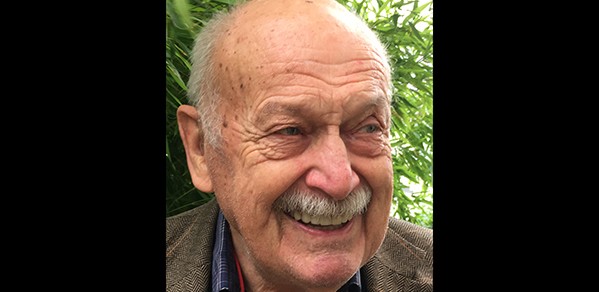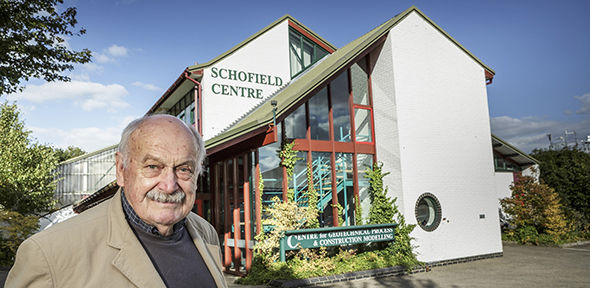
Emeritus Professor Andrew Schofield is to receive a prestigious medal by the Royal Academy of Engineering in recognition of sustained achievement throughout his career.
It is almost impossible to try to quantify the degree of Andrew Schofield’s legacy, from the ideas that characterise and promote design for a robust infrastructure and in the people who he has inspired, both in practice and in academia. He has made a sustained and truly outstanding contribution to the field of civil engineering and is enormously worthy of the 2017 Sir Frank Whittle Medal.
Professor Sarah Springman, Swiss Federal Institute of Technology (ETH) Zurich
Professor Schofield FREng FRS is responsible for transformational research in soil mechanics and geotechnical engineering and has been a leading voice in the field since the 1960s. He will be presented with the Sir Frank Whittle Medal at the Royal Academy of Engineering’s AGM in London on September 5.
His nomination for the Medal was supported by Professor Sarah Springman CBE FREng, Professor of Geotechnical Engineering and Rector at the Swiss Federal Institute of Technology (ETH) Zurich.
She said: “It is almost impossible to try to quantify the degree of Andrew Schofield’s legacy, from the ideas that characterise and promote design for a robust infrastructure and in the people who he has inspired, both in practice and in academia.
“Andrew Schofield has made a sustained and truly outstanding contribution to the field of civil engineering and is enormously worthy of the 2017 Sir Frank Whittle Medal.”
As a civil engineer specialising in soil mechanics, Professor Schofield pioneered the use of centrifuge modelling for geotechnical and civil engineering applications.
Recognising that the stresses and strains inside full scale earth structures could be replicated in miniature, in a scale model subject to high acceleration in a laboratory centrifuge, Professor Schofield led the development of new, world-leading facilities dedicated to modelling geotechnical and civil engineering structures. This included tunnels, trenches, dams, deep and shallow foundations and retaining walls.
Throughout his career, Professor Schofield has been a forceful advocate for basing geotechnical engineering methods in design and construction on a rigorous approach to the underlying mechanics. This journey took him all over the world, where he engaged with universities, governments and industry to offer new solutions to their geotechnical challenges.
He also welcomed students and visitors to his research centre at Cambridge, renamed on his retirement the Schofield Centre for Geotechnical and Construction Modelling. He worked selflessly over the decades to export the technology and techniques he had developed, which are now used worldwide in university and industry research and practice and adopted by major organisations including Exxon (for developing offshore foundations for petroleum exploration) and the US Army Corps of Engineers (for modelling flood defences).

Professor Schofield began his career as a young civil engineer in Nyasaland (now Malawi) in the 1950s before becoming a research student at the University of Cambridge. In 1958, he co-authored a paper titled On the Yielding of Soils with Cambridge colleagues Kenneth Roscoe and Peter Wroth, which became a breakthrough publication.
Inspired by the work of a Russian applied mathematician Vasily Sokolovsky, Professor Schofield approached the problem of predicting the behaviour of soil by studying the dissipation of energy required for the distortion of particulate materials, leading to the first mathematical model for plastic soil behaviour, which he called Cam-clay.
After completing his PhD in soil mechanics, Professor Schofield spent most of the sixties as a University of Cambridge lecturer. In 1968, Professor Schofield published a book with Wroth, Critical State Soil Mechanics, that would transform generations of engineers’ understanding of the mechanical behaviour of sands, silts and clays.
Following a period of time spent elsewhere, Professor Schofield returned to the University in 1974 where he remained for 24 years as Professor of Engineering, before becoming Emeritus Professor in 1998. He was elected a Fellow of the Royal Academy of Engineering in 1986 and of the Royal Society in 1992.

